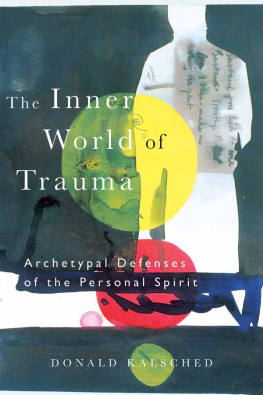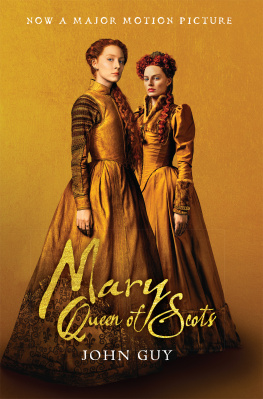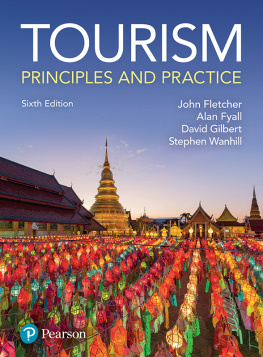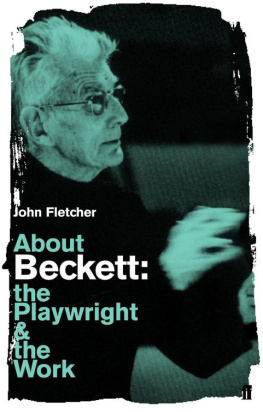Fletcher John - Freud and the Scene of Trauma
Here you can read online Fletcher John - Freud and the Scene of Trauma full text of the book (entire story) in english for free. Download pdf and epub, get meaning, cover and reviews about this ebook. City: New York, year: 2013, publisher: Fordham University Press, genre: Romance novel. Description of the work, (preface) as well as reviews are available. Best literature library LitArk.com created for fans of good reading and offers a wide selection of genres:
Romance novel
Science fiction
Adventure
Detective
Science
History
Home and family
Prose
Art
Politics
Computer
Non-fiction
Religion
Business
Children
Humor
Choose a favorite category and find really read worthwhile books. Enjoy immersion in the world of imagination, feel the emotions of the characters or learn something new for yourself, make an fascinating discovery.

- Book:Freud and the Scene of Trauma
- Author:
- Publisher:Fordham University Press
- Genre:
- Year:2013
- City:New York
- Rating:3 / 5
- Favourites:Add to favourites
- Your mark:
- 60
- 1
- 2
- 3
- 4
- 5
Freud and the Scene of Trauma: summary, description and annotation
We offer to read an annotation, description, summary or preface (depends on what the author of the book "Freud and the Scene of Trauma" wrote himself). If you haven't found the necessary information about the book — write in the comments, we will try to find it.
Freud and the Scene of Trauma — read online for free the complete book (whole text) full work
Below is the text of the book, divided by pages. System saving the place of the last page read, allows you to conveniently read the book "Freud and the Scene of Trauma" online for free, without having to search again every time where you left off. Put a bookmark, and you can go to the page where you finished reading at any time.
Font size:
Interval:
Bookmark:

Freud and the Scene of Trauma

Copyright 2013 Fordham University Press
All rights reserved. No part of this publication may be reproduced, stored in a retrieval system, or transmitted in any form or by any meanselectronic, mechanical, photocopy, recording, or any otherexcept for brief quotations in printed reviews, without the prior permission of the publisher.
Fordham University Press has no responsibility for the persistence or accuracy of URLs for external or third-party Internet websites referred to in this publication and does not guarantee that any content on such websites is, or will remain, accurate or appropriate.
Fordham University Press also publishes its books in a variety of electronic formats. Some content that appears in print may not be available in electronic books.
Library of Congress Cataloging-in-Publication Data
Fletcher, John, 1948 January 2- author.
Freud and the scene of trauma / John Fletcher. First edition.
p. ; cm.
Includes bibliographical references and index.
ISBN 978-0-8232-5459-0 (cloth : alk. paper) ISBN 978-0-8232-5460-6 (pbk. : alk. paper)
I. Title.
[DNLM: 1. Freud, Sigmund, 18561939. 2. Freudian Theoryhistory. 3. Hysteriapsychology. 4. Medicine in Art. 5. Medicine in Literature. 6. Stress Disorders, Traumaticpsychology. WM 460.5.F9]
RC532
616.85'24dc23
2013024365
Printed in the United States of America
15 14 13 5 4 3 2 1
First edition
In Memoriam
Jean Laplanche (19242012)
CONTENTS
To Iain Bruce for four decades of love and companionship, generosity and cordon bleu cooking, without whom this book might not have had a consistent referencing system, an index, or any illustrations.
To Nicholas Ray, a fellow Laplanchean, and collaborator, for his helpful comments on an early draft, his intellectual comradeship, resourcefulness, and staying power in hard times.
To Judith Butler and Peter Fonagy, who very kindly read various drafts and versions of this book, my gratitude for their support and encouragement.
To generations of students, both undergraduate and postgraduate, who took courses with me on Literature and Psychoanalysis, Freuds Metapsychology, Psychoanalysis and Cultural production or wrote dissertations and theses in the field, many of whom were enthusiastic, some of whom claimed it changed their lives, and some of whom swore never to do it again.
The project for this book first emerged, backwards and unexpected, out of a research term funded by the old Arts and Humanities Research Board to enable the writing of a theoretical introduction to a collection of my essays but which turned into something else. They wanted immediate product, upfront, and were not best pleased. Ten years later, here it is. Thinking and writing take time.
Thanks to the University of Warwick for two periods of research leave to work on and complete this project.
A previous version of appeared as The Scenography of Trauma: A Copernican Reading of Sophocles Oedipus the King , Textual Practice 21, no. 1 (2007): 1741.
A previous version of appeared as Freud, Hoffmann and the Deathwork, Angelaki 7, no. 2 (August 2002): 12541.
This book is a study of the central role of trauma in Freuds thought. It argues that it is Freuds mapping of trauma as a scene , the elaboration of a scenography of trauma, that is central to both his clinical interpretation of his patients symptoms and his construction of successive theoretical models and concepts to explain the power of such scenes in his patients lives. This attention to the scenic form of trauma, and its power in the determination of neurotic symptoms, presides over Freuds break from the neurological model of trauma he inherited from Charcot. It also helps explain the affinity that Freud and many since him have felt between psychoanalysis and literature (and artistic production more generally) and the privileged role of literature at certain moments in the development of his thought.
A number of alternative theoretical models are to be found in Freuds work: traumatic seduction, screen memory, inherited primal fantasy ( Urphantasie ), the individually constructed originary fantasy ( ursprngliche Phantasie ). All involve the analysis of sequences of scenes layered one upon the other in the manner of a textual palimpsest, with claims to either material or psychical reality. The notion of a primal scene, a central term for this study (which argues that it has been misconstrued by later generations of psychoanalysts), designates the site of a trauma that deposits an alien and disturbing element in the suffering subject. These signifying traces of the seductive or traumatizing other person resist assimilation and binding into the egos narcissistic structures and personal archives; they function as an internal foreign body and so give rise to deferred or belated aftereffects. Trauma, involving the breaching of psychical boundaries by an excessive excitation and leading to an unmasterable repetition, characterizes both Freuds first encounter with sexuality under the sign of seduction and with the death drive under the various forms of the compulsion to repeat, from the negative clinical transference to shell shock and war trauma.
The book begins with the figure of Charcot and the role of key psychological elements in his predominantly neurological model of trauma and traumatic hysteria. It was Freuds encounter with Charcot and his treatment of hysteria, in Paris in 188586, that turned him from a career that had been based on laboratory dissection, the anatomy of the central nervous system in the lower animals (eels and crayfish) to a concern with hysteria as a psychological condition based on traumatic shock and the operation of unconscious ideas, although he continued throughout the1890s to do highly regarded neurological work on infantile brain diseases. Freud was to break from Charcot to develop a properly psychological theory of hysteria (and, by extension, all psychopathology) based on the operation of traumatic memories and their affects. The problem, both clinical and theoretical, that confronted Freud was the status of the scenes that his patients reproduced, either through recall and association or through acting out. His model of traumatic causality gains in complexity in the texts of 189597, especially through the elaboration of a traumatic temporality with the concept of Nachtrglichkeit (deferred action/afterwardsness). At the same time it is progressively narrowed to a sexual etiology of seduction/abuse in childhood, Freuds notorious seduction theory. Along with the problems of his clinical practice, the development of a concept of fantasy internal to the model of traumatic seduction precipitates the crisis or turning point of September 1897, in which Freud privately rejects his seduction theory in a letter to Wilhelm Fliess. Freud falls silent in public, but in his correspondence with Fliess and his self-analysis he oscillates between the model of traumatic memory and its repudiation in a turn to an emergent model of infantile sexuality. Here he proposes as a universal event an emotional configuration that is not until 1910 labeled the Oedipus complex, but which in the crisis months of late 1897 is outlined through a brief commentary on Sophocless Oedipus the King and Shakespeares Hamlet . This turn to tragedy as a model of male subjectivity is more fully elaborated in The Interpretation of Dreams (1900). It crystallizes a shift in focus from symptom to subjectivity, from the narrower field of psychopathology to a concern with psychical structure and a developmental model of sexuality as such in the Three Essays of 1905.
Font size:
Interval:
Bookmark:
Similar books «Freud and the Scene of Trauma»
Look at similar books to Freud and the Scene of Trauma. We have selected literature similar in name and meaning in the hope of providing readers with more options to find new, interesting, not yet read works.
Discussion, reviews of the book Freud and the Scene of Trauma and just readers' own opinions. Leave your comments, write what you think about the work, its meaning or the main characters. Specify what exactly you liked and what you didn't like, and why you think so.










